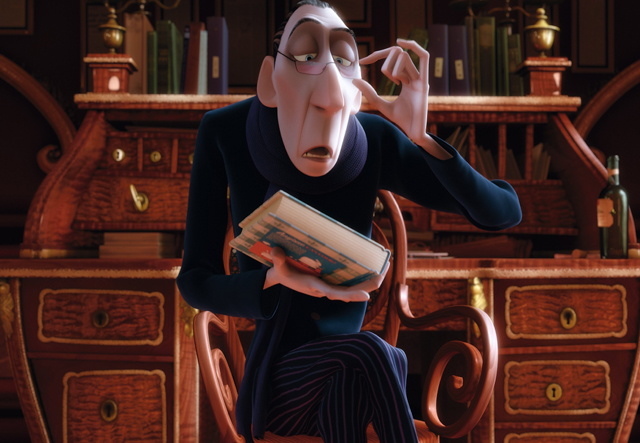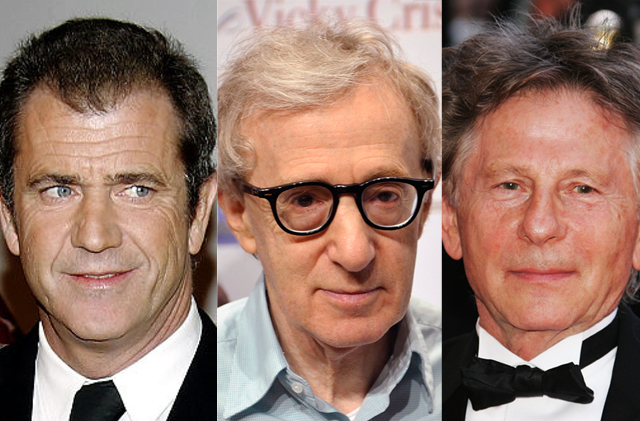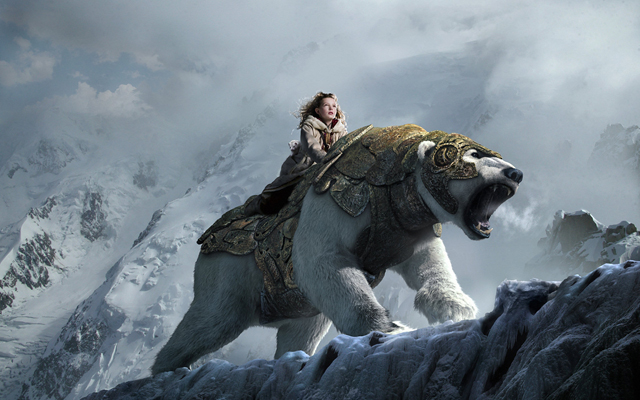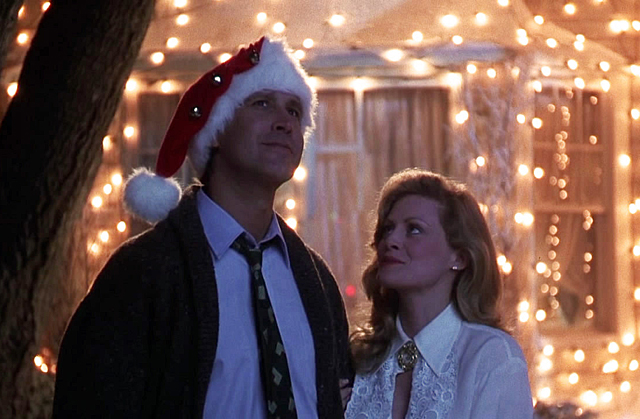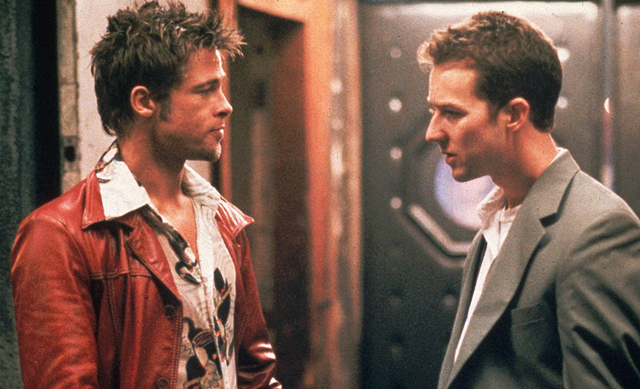
In the midst of all the big summer season blockbusters that are released this time of year, there are also a handful of small independent films that make it into theaters. Usually the independent film industry tries to aim for year end releases, if they feel that their movie is award worthy, but oftentimes there are some films that are released earlier in the year, purely because of audience curiosity hitting a high pitch on which the filmmakers wish to capitalize, or because the studios didn’t know where else to put them in their schedule. This latter camp could be for two reasons; one, because the movie in question is so strange that the studio is unsure how the audience will react to it, or that it’s just plain unwatchable and the studio dumps it into theaters. Whatever the movie turns out to be, the audience ultimately decides. There is a part of the indie film audience that craves for the weird and unpredictable, but this is also an audience with discerning tastes. For the most part, art house audiences want to see something challenging and provocative; something different from the norm of the average studio output. But, like with all art-forms, there stands a fine line between making something that’s provocative, and something that rings hollow. Filmmakers must never forget that cinema is an art-form with the clear purpose of entertainment. You need to make something that can grab and hold your audiences attention for two hours at a time, and to do that, concessions to the audiences tastes must be accounted for. That’s not to mean that a filmmakers artistic expression needs to be watered down to appeal to the public; it just means that the filmmaker must examine whether or not their vision can hold weight within the medium of cinema.
This was the thought that ran through my head over the last couple weeks as I experienced two of this summer’s most talked about independent films. The first one I saw was a bizarre, dryly dark comedy called The Lobster, which stars Colin Ferrell as a lonely man who is mandated to find his true love at a resort, or else he will be transformed into the animal of his choice; the titular lobster. The second film that I saw was Swiss Army Man, a buddy comedy about a marooned castaway played by Paul Dano who finds his way home thanks to the many talents of his resourceful friend; a farting corpse played by Daniel Radcliffe. Both films commit to their ridiculous premises and even manage to find a surprising profoundness within their narratives, mostly pertaining to human relationships and the pressures that society puts on the individual. But, after seeing both, I’m surprised how different my reaction was to both movies. I found Swiss Army Man to be the far more effective of the two, ,mainly because of it’s charm, and the very noticeable lack of charm in The Lobster. Even still, I can understand completely how some people might have the opposite opinion and prefer The Lobster as the better film, or find them both equally charming. I can also completely understand if someone ends up hating both as well. It’s clear that indie films like Swiss Army Man and The Lobster are not for anyone, and their target audience may be minuscule at best. But, if one keeps an open mind, they may find the appeal of movies like these in unexpected ways, and that sense of discovery is what really helps to drive the independent market. Indie films tend to be a crap shoot for the industry, because oftentimes you’ll find movies within it that have limited appeal and then other times you’ll find the next big thing.
I think the reason why I responded so strongly to something like Swiss Army Man was because there was a sense that came through that the filmmakers knew what kind of movie they were making. The directors, Dan Kwan and Daniel Scheinert (credited as The Daniels), have even stated in interviews that the movie sort of started as a bet, seeing whether or not they could make a movie centered around a flatulent corpse. The fact that they made it work, and even found a surprisingly humane narrative about companionship with it, is something rather remarkable and it shows the real power of creative storytelling. But, what the movie also does well is to not take itself too seriously, while at the same time keeping it relentlessly absurd. I think this was helped immensely by the performances of the two leads, Dano and Radcliffe. If you don’t buy into their performances, then the absurdity of the premise rings hollow. Radcliffe in particular takes command of the film, making the film’s sentient corpse feel authentic and not at all farcical; like an artsy Weekend at Bernie’s (1989). The humor is overall balanced, and that’s a large part of why it works. The gags come naturally out of the situation and support the narrative of these two characters. By doing that, it avoids a pitfall that too many other quirky independent films fall into called pretentiousness.
The Lobster is unfortunately the kind of movie that I feel earns the label of pretentious; but at the same time, it is also far from being the most pretentious thing I’ve ever seen on the big screen. The Lobster’s main fault is that it takes what should be absurdly funny within it’s premise and strips it down into a cold, sterile presentation. It’s clinical, when it should be farcical. I recognize where the humor should be, but the staging undermines what humor could have been there. The director, Yorgos Lanthimos, crafted a pretty looking movie around this premise, with beautiful cinematography, but he did so in detriment to the humor. The film has a languid pace to it, making the ridiculousness feel like a chore, and that ultimately is what makes the movie fail. It becomes pretentious because it never quite earns the huge artistic leaps that it attempts to take. If the movie stuck with a cohesive tone either underlined the message of the film, or the artistic ambitions of the director, or the desire to cultivate an absurd world in which this story takes place, there might have been something here; and yet, nothing comes out of all that ambition. But, maybe pretentious could be too strong a word to label this movie. I don’t know what the director’s ultimate intent was, but the result feels too much like art for arts-sake. But, it could have just been because this movie didn’t connect with me like Swiss Army Man did. Swiss Army Man has it’s pretentious moments too (including existential soliloquies by it’s characters, and rhythmic montages that don’t really add anything, and a completely baffling finale) but they didn’t spoil the experience for me. Man balances it’s art with story, while Lobster let’s the art overwhelm everything else.
It’s an occurrence you see a lot within the artistic community; where there becomes a disconnect between the artist and the viewer. Sometimes it’ll take a while for a piece of art to connect with it’s audience, and then there are other times when no connection will be made at all. The most dangerous thing for an artist to do is think that what they make is for their own indulgence. Movies should have a broad appeal, because it’s the only thing that justifies their creation in the end. You take an audience’s reaction for granted and you open yourself up to failure. But, pretentious film-making isn’t usually characteristic of most independent film-making; if anything, pretension more often comes from established, mainstream artists. The Wachowskis for instance have made what I consider some of the most pretentious films in recent memory; and they accomplished this through big studio backing. The Matrix (1999) managed to be that rare box office hit that kept it’s philosophical musings and crowd pleasing action sequences in a nice balance, because both were delivered with an earnestness that kept everything interesting. But the novelty wore off in the sequels, and The Matrix Reloaded and Revolutions (both 2003) collapsed under the lack of cohesion, and both the action and philosophical elements lost their power due to the Wachowskis desire to show off instead of reinvent their franchise. They have continued down this road with muddled messes like Speed Racer (2008) and Jupiter Ascending (2015), movies that never become as profound or as thrilling as the Wachowskis seem to think they’ll be. The films of M. Night Shaymalan also come to mind, where it seems like the filmmaker is holding the audience at a distance while trying to make his narrative hit the mark that he believes it should make. And action filmmakers Roland Emmerich and Zack Snyder are achieving new levels of pretentiousness as they make films that believe they are provocative, but are really just stupid.
But, should a filmmaker compromise their vision in order to avoid appearing pretentious and find broader appeal. Not at all. The thing that will help a filmmaker out the most in the industry is to find their own unique voice. Some audiences will accept something odd and unique at their local theater if they already are familiar with the person or people that make it. Some independent filmmakers luck out whenever their unique style clicks with an audience, and it helps them gain a little more ease when attempting to make films their own way. A really unique voice to rise and mature out of the independent field would be someone like Wes Anderson. Anderson’s style is unlike any other in film-making, and easy to define, and has changed little since his early days. And still, it’s understandable if his style doesn’t click with everyone, but the man has earned enough trust with his audience to where he has a sizable fan base that will allow him to make whatever he wants to. His confidence in his art has allowed his movies to avoid the pitfalls of pretension, even though his overly artistic style could easily fall that way if he ever took it for granted and choose to just repeat himself over and over again. A fundamental understanding of a person’s own artistic limits and their skills to tell a story are essential for becoming a success. I think that’s one of the things that separates the amateurs from the professionals, and why a good film education is needed. I had my own film school experience, and it showed me how knowledge of the medium would give my fellow students the much needed balance that they would need to make movies that would work. Any person can point and shoot a camera, but a film education teaches you how to pace, compose, and edit a scene, making what you shoot all the more potent in the end.
But what a filmmaker must also realize is that their artistic style is also prone to evolving into pretension if not experimented with. The best filmmakers have their own style, but they also change their styles slightly to fit with the times. Picking the right subjects for your future projects makes all the difference. Some filmmakers make the mistake of relying too heavily on their styles, forcing them into story-lines where it doesn’t fit. This is a problem that I see with someone like Terrence Malick. He famously took a nearly 30 year break from film-making, only to return in the late 90’s with the war epic, The Thin Red Line (1998). Since then, he has been consistently turning out ambitious, but overly poetic dramas, each one more dense than the last. His style basically involves a free flowing narrative with his characters expressing their emotions in dubbed over narration that often sounds like their reading poetry. Interesting enough, his style works best when it’s put into unexpected places, like a World War II setting in The Thin Red Line, or pre-colonial America in The New World (2005). But since these epics, he’s focused his style on examinations of American life, whether it’s post-War suburbia in The Tree of Life (2011), the contemporary American Midwest in To the Wonder (2013) or the glitziness of Hollywood in Knight of Cups (2016) and his style has lost much of it’s appeal in the process. While before he was reinventing different genres with his unique voice, now he is repeating himself with too many similar narratives, and his style now feels minimized as a result. His last three films are pretentious, because they say noting that Malick hasn’t already said before and are just are for the sake of art; beautiful as they may be. Filmmakers of the same ilk as Malick, like David Lynch or Stanley Kubrick have similar uncompromising styles, but they made them work over longer periods by applying them to different things; whether it be different genres or narrative structures. It’s how they’ve avoided the pitfalls of pretension that Malick has sadly found himself within.
Overall, we as an audience must decide what is deemed pretentious and what is not, and ultimately, we probably will never find a full consensus of what that actually means. We do know pretentious when we see it, but sometimes a pretentious piece of art may actually be something we appreciate, while for others it will remain garbage. I certainly responded the former way to Swiss Army Man, even though I do acknowledge that it will not be for everyone. Hell, the movie rubbed some people the wrong way right from the moment it premiered at Sundance Film Festival, where audience members at the prestigious event even walked out; probably put off by the seemingly sophomoric flatulence humor. But, there were others like me that responded well enough and it got the buzz that it deserves to receive a big enough release (no pun intended). The Lobster on the other hand left me underwhelmed because it was quirky without the emotional drive needed for me to care. That being said, many other critics have praised the film for it’s uniqueness, and I can understand that response as well. Surreal movies that defy easy explanation are necessary for the film industry, because they allow for new ideas and techniques to take hold in the medium. It takes earnestness in the project itself and a willingness to make it appealing that ultimately decides whether or not it will connect with it’s audience. Also, trust the intelligence of your audience. If you go too far artistically, or make your themes too heavy or not heavy enough for the narrative to carry, than the audience will reject your work. It’s the story that ultimately matters most in the end, and a commitment to that can allow for any of the insane things that you attach onto it. Believe me, I’ve seen some weird things on the movie screen over the years. Some of it may drive people away, but if you commit to seeing it through to the end, then you’ll know for sure if it escapes the pitfall of pretension and achieves what it’s maker wanted, and it could be the movie that can possibly change cinema forever.
